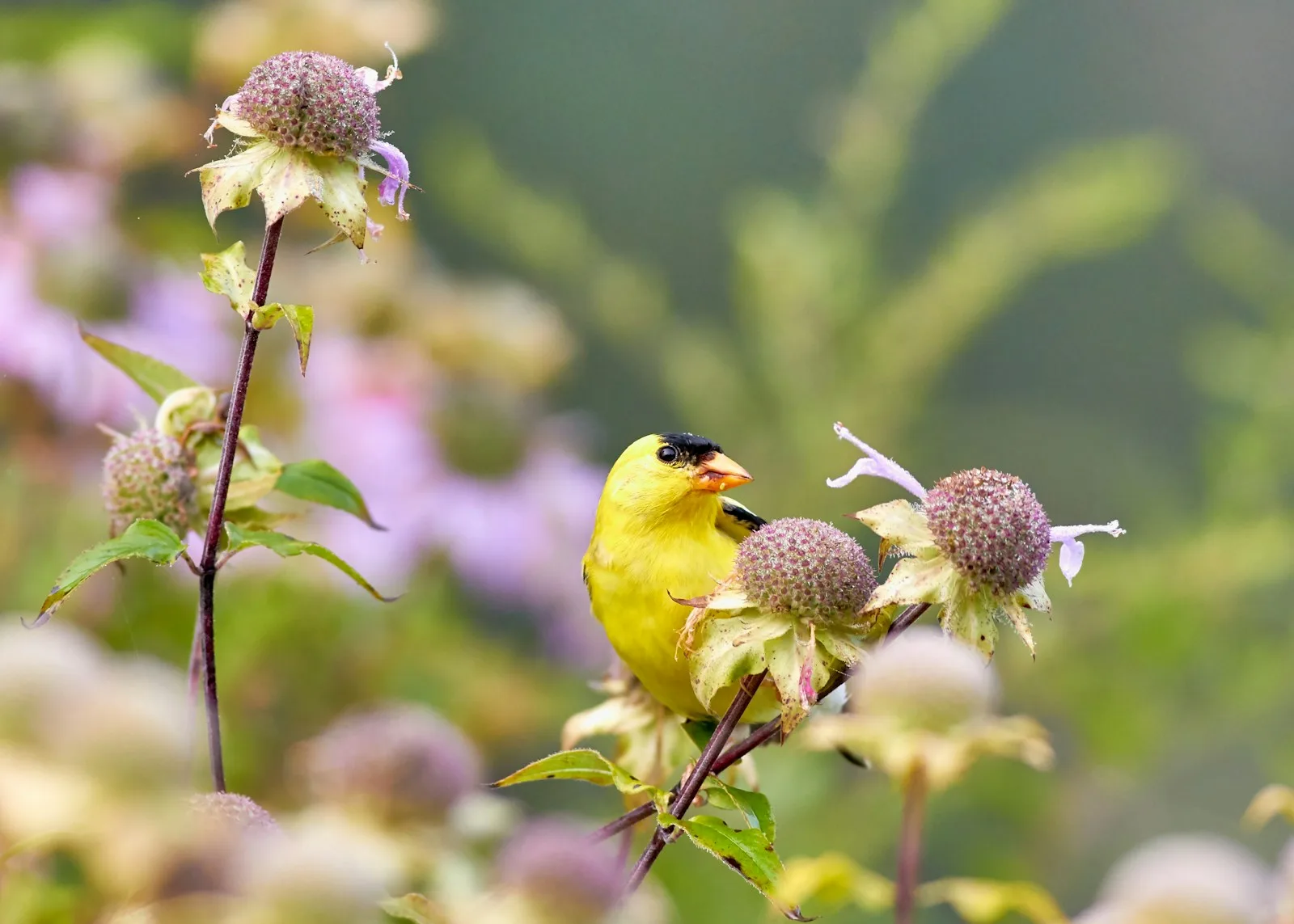
Table of Contents
American goldfinches are interesting to observe and listen to. Birds are just beautiful. Males have wings that are almost unbelievably bright yellow and have a characteristic wavy flight pattern. But they are also consistent. Backyard bird lovers who want to draw these feathered companions into their landscape are in luck. Milkweed fiber is frequently used by goldfinches in their nests. This means that growing milkweed in your yard can help goldfinches build nearby nests in addition to attracting butterflies.
Most of North America has the American Goldfinch (Carduelis tristis), a frequent visitor to residential backyards. Since goldfinches are primarily seed eaters, you may be drawing finches in your yard if you have bird feeders or ornamental grasses, thistles, or other seed-bearing plants. If you have milkweed in your garden, goldfinches are more likely to nest nearby in addition to stopping by for food.
American goldfinches can be attracted to your yard by planting colorful flowers such as black-eyed Susans, sunflowers, or coneflowers. Vibrant colors and many seeds attract these happy birds. Goldfinches frequently build their nests near flowers as they grow and bloom, trapping them in greenery for protection and safety.
Not only is it fun to watch these vibrant birds fly through your garden, gathering materials and building their nests, but it also shows how a well-tended garden and wildlife can coexist. Thus, by growing these vivid flowers, you can not only bring the colorful presence of American Goldfinch to your outdoor area but also improve the beauty of your surroundings.
Read more: The Birds You Do Not Want To Be Seeing In Your Yard
Grow this vibrant flower to watch American goldfinches build their nests in your yard
Growing Milkweed

Native to the United States, Asclepias spp. It is a plant known by many different names. These include the pink and white flowers of common milkweed (Asclepias syriaca), the purple flowers of marsh milkweed (Asclepias incarnata), and the bright orange flowers of butterfly milkweed (Asclepias tuberosa). USDA zones 3 through 9 accept all three plants as perennials. Common milkweed and butterfly milkweed grow best in dry climates and once established can be fairly resilient to drought, while swamp milkweed is best suited to growing in moist areas such as rain gardens.
While common milkweed needs full sun to thrive, swamp and butterfly milkweed can tolerate full or partial sun. Asclepias curassavica, a colorful tropical milkweed native to South America, is one of the many varieties of milkweed available. Although this type of milkweed is very beautiful, growers in the United States are advised not to use it because native animals—especially monarch butterflies—benefit more from native milkweed species.
Using Milkweed In Your Garden

Many of the foods preferred by milkweed and goldfinch are ideal companion plants. Coneflowers are loved by beautiful birds for their seeds, and like common and butterfly milkweed, they thrive in dry, sunny conditions. Coneflowers come in a variety of sizes, from giant coneflowers that can reach eight feet in height to dwarf coneflower varieties that are only twenty inches tall. Up to three feet tall, butterfly milkweed can sit in the center of this arrangement. Goldfinches aren’t the only ones who will benefit from this garden. In your yard, it will also help attract more pollinators.
Swamp milkweed is an excellent partner for cup plants (Silphium perfoliatum) because it likes a wet environment. Native to North America, cup plants also grow well in rain gardens and other moist environments. Goldfinches also love the seeds of the cup plant. Because cup plants grow to a maximum height of nine feet, it’s best to place them behind a small marsh milkweed.
READ | Important Tips for Getting Flying Tufted Titmouse Birds in Your Yard

